Kuala Lumpur, Malaysia – Friday, March 4th & Saturday, March 5th, 2011
One of the advantages to life in Hong Kong is that it’s geographically well positioned to easily explore the majority of east Asia with an inexpensive short- or medium-haul flight. I was also lucky that my classes in Hong Kong were all concentrated on Tuesdays through Thursdays, meaning I could easily put together a five-day itinerary to Malaysia and Singapore, the first of three such extended trips I would undertake that spring. After my last class on Thursday, I headed to the airport for an AirAsia flight direct to Kuala Lumpur, landing just after midnight to take my first breath of the steamy tropical air as I waited for the coach to take me into town.
Checking into my hostel, BackHome Kuala Lumpur, the dorms had each person’s name written on the door in chalk. (I did have to double take when I first saw the name “Kittiyaporn”. Apparently it’s a common Thai name.)
The next morning I got up as early as I could muster, after the late arrival and hot, humid night, in order to nab tickets for the Petronas Twin Towers observation bridge tour, which were only sold in-person and the day of. As two of the most famous buildings in Kuala Lumpur, I was aware that tickets sell out early, though I hoped a Friday in March wouldn’t be peak season. It took some effort to find it amidst the yet-to-fully-open mall near the base of the towers…
And when I did, I was greeted with this massive queue for tickets. Not how I hoped to start my day, although minutes after I joined they closed the queue entirely to new arrivals, so I still counted myself as lucky.
By the time I reached the ticket counter 90 minutes later, I was only able to reserve one of the last tour times of the afternoon. I’d have to continue on with the rest of my itinerary for the day before returning later.
With reservation in hand, I made my way to the Kuala Lumpur Metro towards the Perdana Botanical Gardens, the largest public park in Kuala Lumpur.



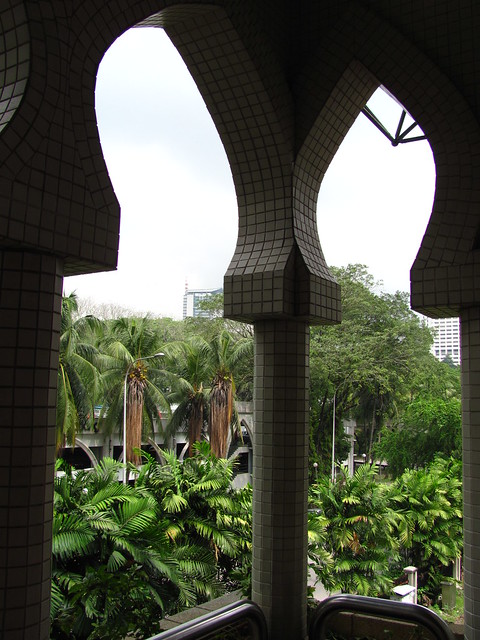
 Not anxious to spend more money (there would be plenty of opportunities for that this weekend), I took a long walk through the gardens, which were set up with numerous cultural and zoological attractions.
Not anxious to spend more money (there would be plenty of opportunities for that this weekend), I took a long walk through the gardens, which were set up with numerous cultural and zoological attractions.










 Situated along the edge of the park was the National Mosque of Malaysia. This was my first time in a majority Muslim country and I was curious to see the Islamic influence, although the travel guides I researched disagreed on how much or under what conditions non-Muslims could experience the National Mosque. While the exterior was open to walk around, the signs made it clear I wouldn’t be exploring inside on this day.
Situated along the edge of the park was the National Mosque of Malaysia. This was my first time in a majority Muslim country and I was curious to see the Islamic influence, although the travel guides I researched disagreed on how much or under what conditions non-Muslims could experience the National Mosque. While the exterior was open to walk around, the signs made it clear I wouldn’t be exploring inside on this day.
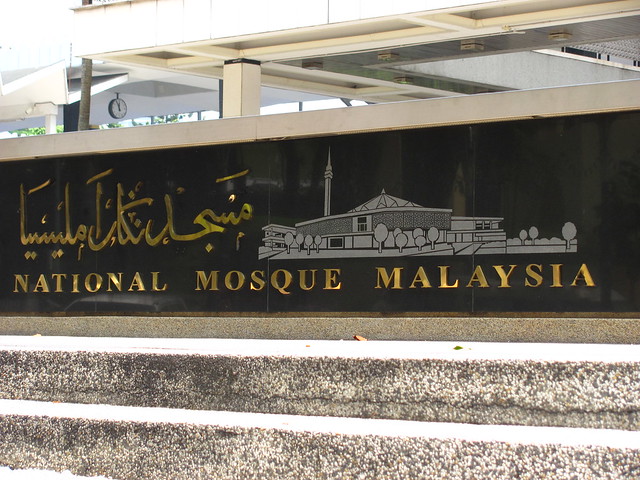

 The National Mosque was built in the 1960’s with a very modernist design.
The National Mosque was built in the 1960’s with a very modernist design.


These well-armored doods were hanging out nearby, demonstrating proper firearm safety. Nearby there were a few more distinctive examples of Islamic-Malay architecture, like this historic train station.
Nearby there were a few more distinctive examples of Islamic-Malay architecture, like this historic train station.
At last I arrived at my main destination for this walk: The National Museum of Malaysia.
Outside of the museum were several large displays representing Malaysia’s history of transportation.


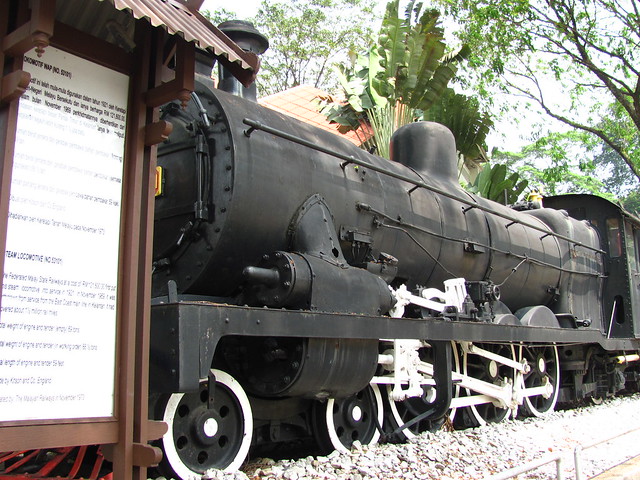
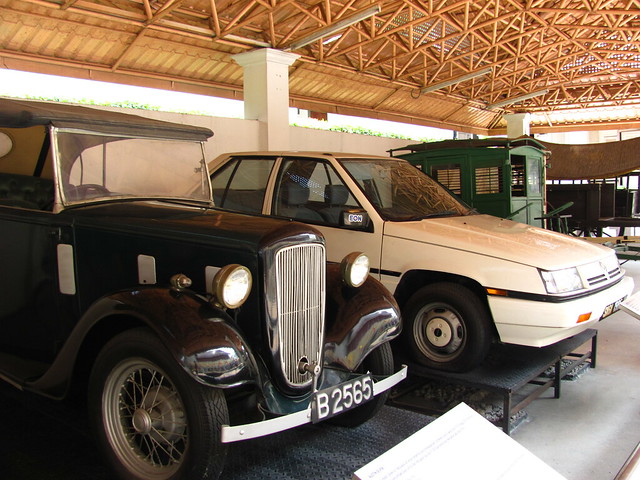
 The National Museum is the premiere museum dedicated to Malaysian history and culture. This museum also has an interesting history, built in the 1960’s following Malaysian independence on the site of a previous museum that was bombed during World War II.
The National Museum is the premiere museum dedicated to Malaysian history and culture. This museum also has an interesting history, built in the 1960’s following Malaysian independence on the site of a previous museum that was bombed during World War II.


 Unfortunately, once inside it was fairly clear that the standards of exhibit design probably haven’t been significantly updated since the 1960’s either. At least photography was allowed. They also organized the galleries in an easy-to-follow chronological order, starting in the Early History gallery.
Unfortunately, once inside it was fairly clear that the standards of exhibit design probably haven’t been significantly updated since the 1960’s either. At least photography was allowed. They also organized the galleries in an easy-to-follow chronological order, starting in the Early History gallery.



 Technical difficulties:
Technical difficulties: Next, moving into the Malay Kingdoms gallery, probably my favorite part of the National Museum. Many different religions have influenced Malaysian culture over the centuries, and that influence is still felt in Malaysia’s multicultural society today.
Next, moving into the Malay Kingdoms gallery, probably my favorite part of the National Museum. Many different religions have influenced Malaysian culture over the centuries, and that influence is still felt in Malaysia’s multicultural society today.


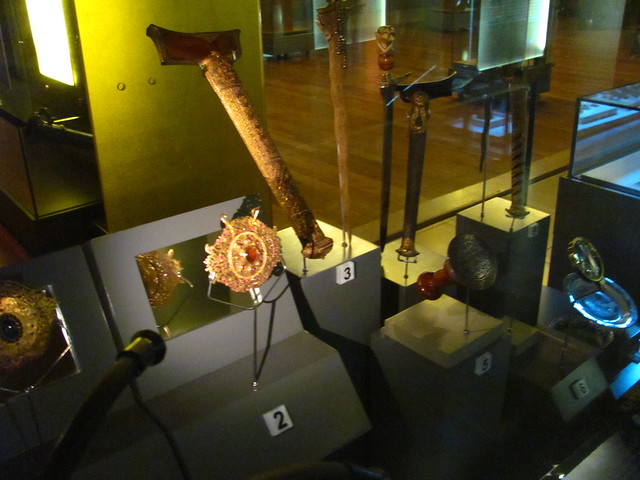



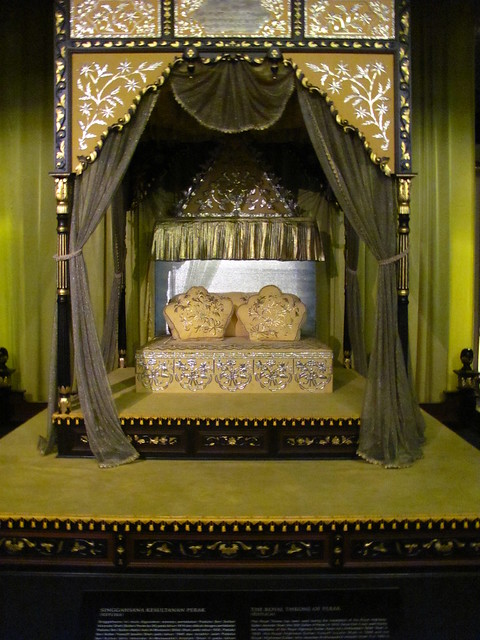
 Next, it’s the Colonial Period, where various forms of weaponry play an important role in every exhibit.
Next, it’s the Colonial Period, where various forms of weaponry play an important role in every exhibit.
And, of course, finishing with the Malaysia Today gallery. Although the communists helped Malaysia achieve independence from the British, and the country seems to like the color red, Malaysia never became a communist country like many of its neighbors.


 This is the Malayan Declaration of Independence, officially proclaimed in 1957.
This is the Malayan Declaration of Independence, officially proclaimed in 1957.
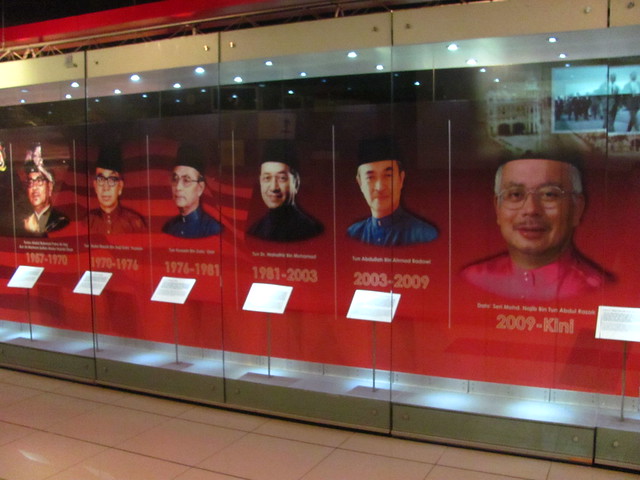 Three thousand years of beautiful tradition, culminating today in a stuffed monkey toy.
Three thousand years of beautiful tradition, culminating today in a stuffed monkey toy. Finished at the museum, I passed through the colorful Little India community on my way to the next destination.
Finished at the museum, I passed through the colorful Little India community on my way to the next destination.
I walked the short distance to Kuala Lumpur Sentral train station to take the metro service to Batu Caves.
The incredible thing about visiting Batu Caves is how it’s only a quick 8-mile train ride from the bustle of modern Kuala Lumpur, yet when you arrive it feels like you’ve just stepped into another world.
Batu Caves are a Tamil Hindu shrine dedicated to Lord Murugan within in this limestone formation. Despite looking like it could make a good setting for an Indiana Jones movie, the caves weren’t used for religious purposes until after they were made famous by an American naturalist in 1878, and elements like the 140 foot tall gold statue of Murugan were added as recently as 2006.
Besides the Hindu gods, the most famous inhabitants of Batu Caves are a colony of long-tailed macaque monkeys that freely roam the site looking for food to steal from tourists. Simultaneously charming and terrifying.



 To get to the main cave and shrine, you have to take a flight of 272 stairs up 300 feet to the top.
To get to the main cave and shrine, you have to take a flight of 272 stairs up 300 feet to the top.
 Hrrgh… really feeling the 90°F humidity now… am I halfway there yet?
Hrrgh… really feeling the 90°F humidity now… am I halfway there yet?
Almost…
 Made it. There was a vendor selling cold drinks at the top doing what I could imagine was very good business.
Made it. There was a vendor selling cold drinks at the top doing what I could imagine was very good business.
 It’s also cooler inside the main cave. Time to explore:
It’s also cooler inside the main cave. Time to explore:











 Fortunately, 272 steps is much easier going down than going up.
Fortunately, 272 steps is much easier going down than going up.
 Heading back to Kuala Lumpur now. The return time for my Petronas Towers ticket is drawing near.
Heading back to Kuala Lumpur now. The return time for my Petronas Towers ticket is drawing near. Exhausted and sun-soaked, I used the slow train ride back into Kuala Lumpur to take a brief yet well-earned afternoon nap. Returning downtown, it was time to ascend the Petronas Twin Towers.
Exhausted and sun-soaked, I used the slow train ride back into Kuala Lumpur to take a brief yet well-earned afternoon nap. Returning downtown, it was time to ascend the Petronas Twin Towers.
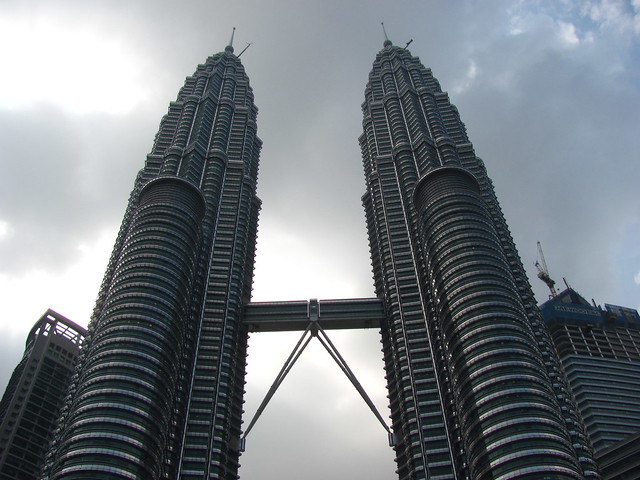
 The Petronas Towers were the world’s tallest skyscrapers from 1998 to 2004 at 1,483 feet high, and have a distinctive post-modern Islamic architectural style. With a 558 foot high skybridge, they are also still the world’s tallest twin towers. (To make a coaster comparison, the Petronas Towers’ record reminds me of the time when racing coasters could still compete for the world’s tallest and fastest honors. In either case, I doubt the economics will allow either coasters or towers to ever have another twinned record-holder.)
The Petronas Towers were the world’s tallest skyscrapers from 1998 to 2004 at 1,483 feet high, and have a distinctive post-modern Islamic architectural style. With a 558 foot high skybridge, they are also still the world’s tallest twin towers. (To make a coaster comparison, the Petronas Towers’ record reminds me of the time when racing coasters could still compete for the world’s tallest and fastest honors. In either case, I doubt the economics will allow either coasters or towers to ever have another twinned record-holder.)
Petronas is the national oil and gas company owned by the Malaysian government. It’s perhaps no surprise that in addition to building really big towers, the company is into Formula 1 racing.
As of my visit in 2011, the Petronas Towers were still the fifth tallest buildings in the world, but by 2019 they would only be the 16th tallest, with most of the new towers surpassing it built in China.
Their graphics still needed some updating.
 The tour began with a short film produced by Petronas about how amazing Petronas is. Then it was into the elevator with its ridiculous panel of buttons to be taken to the skybridge.
The tour began with a short film produced by Petronas about how amazing Petronas is. Then it was into the elevator with its ridiculous panel of buttons to be taken to the skybridge.
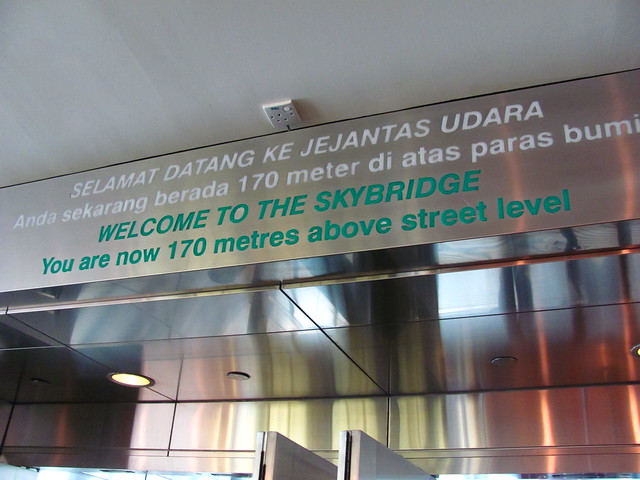
 While “only” 558 feet up, it was still a pretty interesting view of the city, not least because you’re positioned between two skyscrapers with nothing directly below you. A glass-bottomed floor would have really heightened the vertigo effect.
While “only” 558 feet up, it was still a pretty interesting view of the city, not least because you’re positioned between two skyscrapers with nothing directly below you. A glass-bottomed floor would have really heightened the vertigo effect.

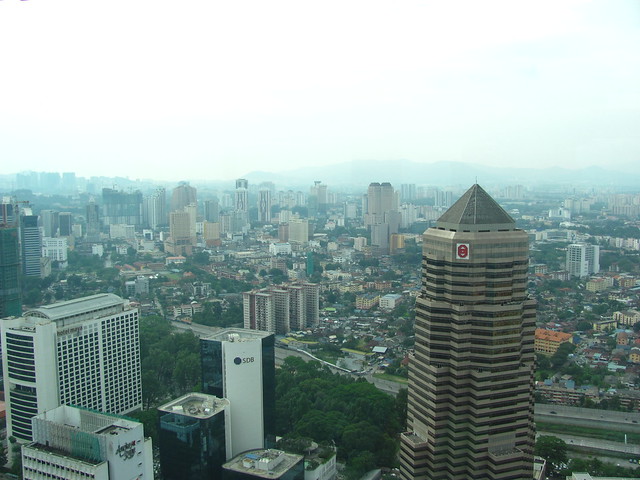 By the way, that bridge isn’t directly connected to the architectural support of the towers, and is flexibly designed to allow the towers to sway in high winds. Wasn’t too breezy on this day.
By the way, that bridge isn’t directly connected to the architectural support of the towers, and is flexibly designed to allow the towers to sway in high winds. Wasn’t too breezy on this day.

Some more views from (and of) the Petronas Towers on the skybridge:



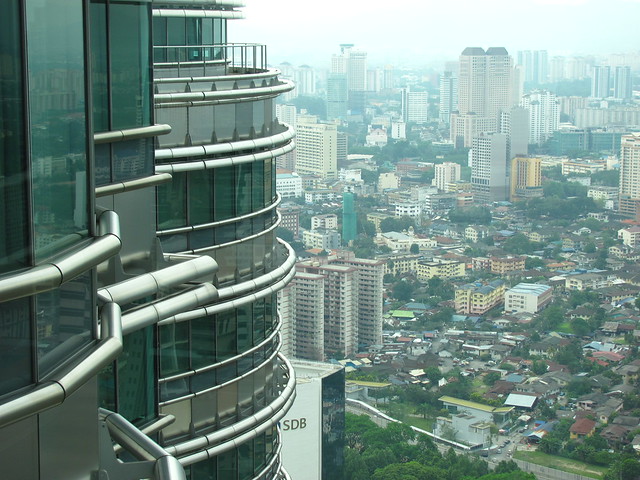




 My day wasn’t over yet. From the Petronas Towers, I took this elevated monorail to the Berjaya Times Square Theme Park for the rest of the evening.
My day wasn’t over yet. From the Petronas Towers, I took this elevated monorail to the Berjaya Times Square Theme Park for the rest of the evening.
Yet once I was done with theme parks, there was still a bit more of Kuala Lumpur to see after dark.


 Before leaving Kuala Lumpur I stopped by Little China on Petaling Street to find a cheap souvenir by which to memorialize my visit. A tiny steel model of the Petronas Towers did the trick.
Before leaving Kuala Lumpur I stopped by Little China on Petaling Street to find a cheap souvenir by which to memorialize my visit. A tiny steel model of the Petronas Towers did the trick.
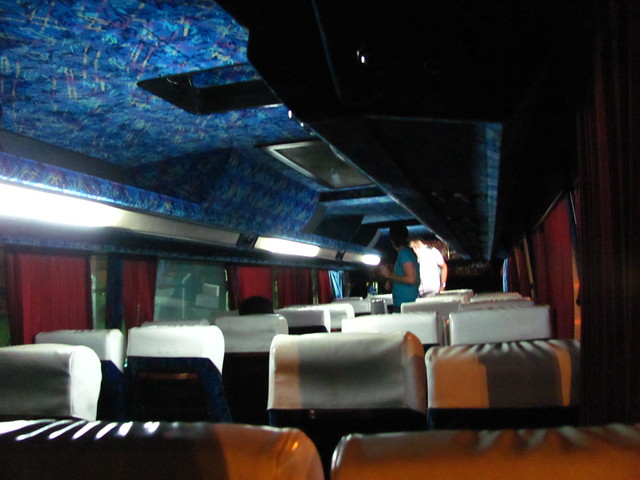











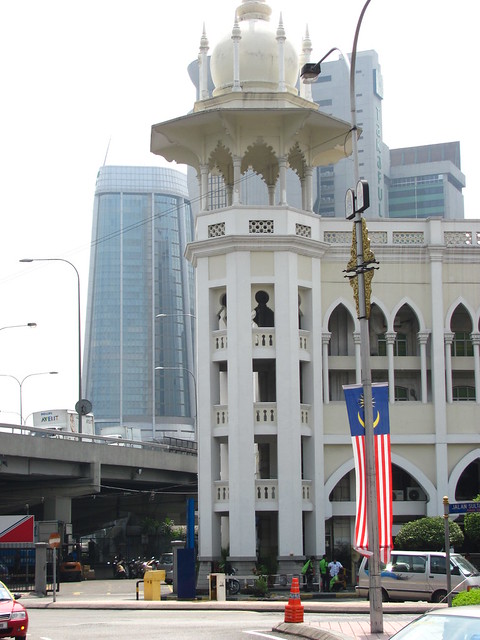




































Comments